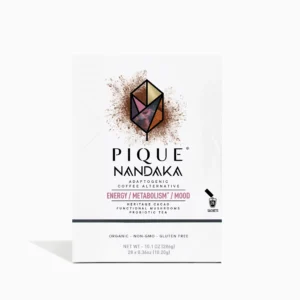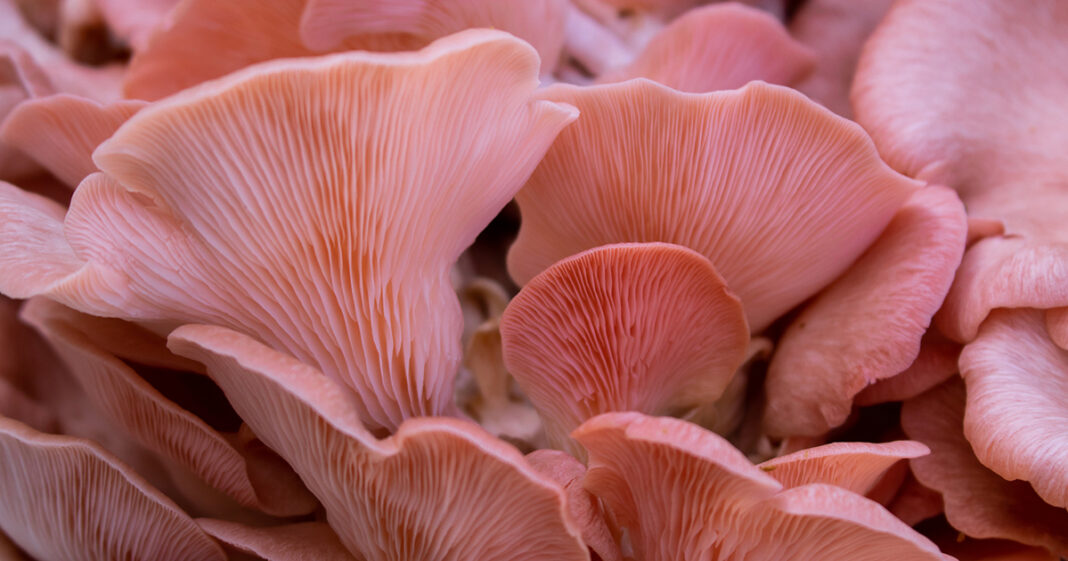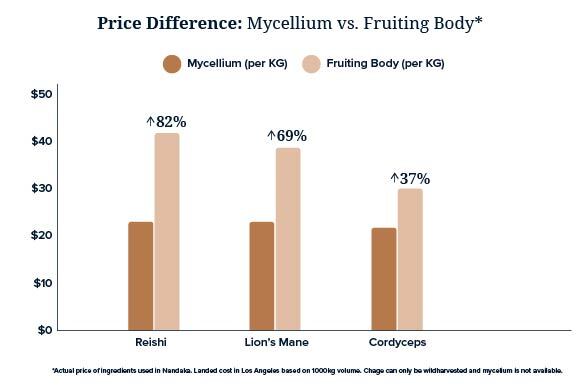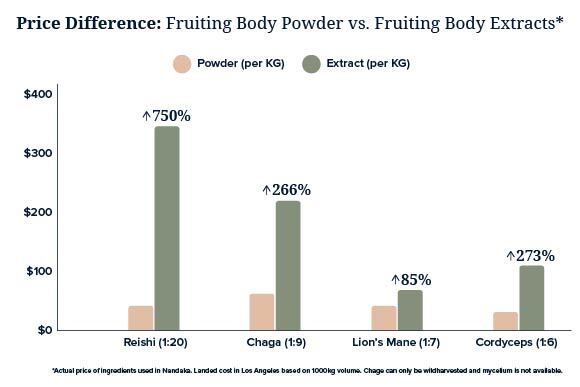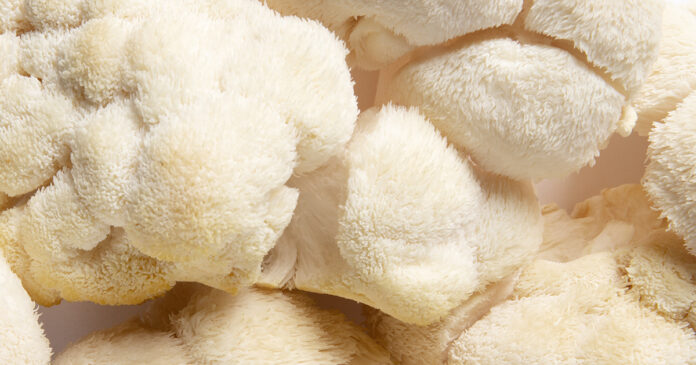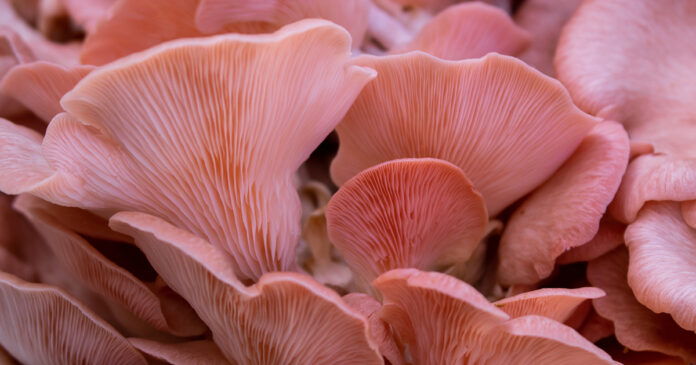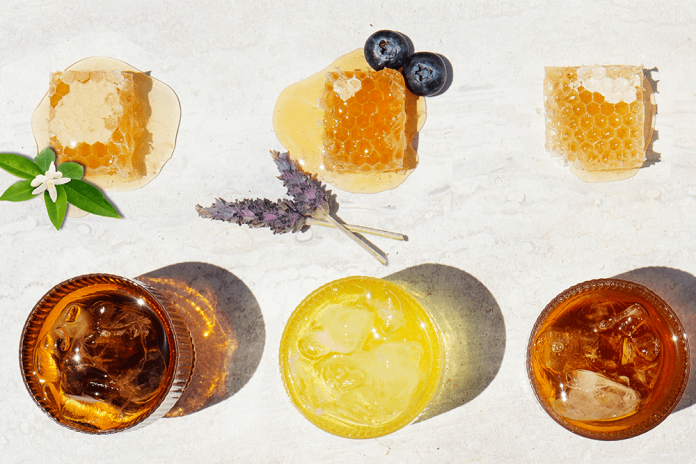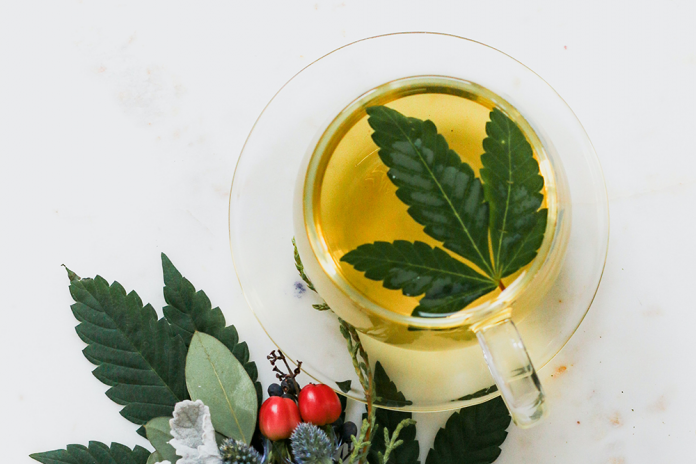Growing up in the 90’s in the U.S., the mushroom was never considered medicine. Button mushrooms shared the same space with broccoli and peppers in the crisper drawers of most refrigerators. Maybe you’d see them sliced in a salad or sauteed in a stir-fry, but no one was talking about the functional benefits of mushrooms back then.
Flash forward to today, and there are hundreds of mushroom products in organic markets across the country. From powders and pills, to kombucha, to beer – hundreds of brands tout the benefits of mushrooms – from stress relief and anti-aging, to immune boosting and increased vitality. But how much is legitimate and what is wellness hype?
This article outlines everything you need to know about adaptogenic mushrooms, including how they work, mushroom efficacy, and what types of mushrooms have the most powerful medicinal properties. First – what’s the difference between adaptogenic (or functional) mushrooms and the ones you find in the produce section?
What’s the Difference Between Adaptogenic and Supermarket Mushrooms?
Many medicinal or functional mushrooms are classified as “adaptogenic.” Adaptogens are a subset of plants and mushrooms that help your body respond to stress, fatigue, and anxiety and support overall wellbeing. So, the first (and main) difference between adaptogenic and culinary or supermarket mushrooms is the concentration of beneficial bioactive compounds.
Adaptogenic mushrooms tend to have a much higher concentration of beneficial antioxidants, beta-glucans, and terpenes, adding to their more bitter, earthy taste. These typically include Lion’s Mane (hericium erinaceus), Cordyceps (Cordyceps sinensis), Chaga (Inonotus obliquus), and Reishi (Ganoderma lingzhi)
Common culinary mushrooms like Shiitake, Maitake, Oyster, Portobello, or White Button are much lower in these beneficial nutrients, giving them a much milder taste and making them more versatile in the kitchen.
The second difference is price and accessibility. Functional mushrooms are hard to come by in most grocery stores. Part of that is due to cost and availability in the U.S. markets. Most functional fruiting body mushrooms aren’t grown in the U.S. at all. And with costs that far exceed that of a Portobello or Shiitake, functional mushrooms are typically found as an extract in supplement form – not fresh for your stir-fry.
Of course, many culinary mushrooms offer nutritional benefits – you just have to eat a lot of them on a regular basis to see any real health benefit.
What Are The Health Benefits of Adaptogenic Mushrooms?
Mushrooms have been used for thousands of years by traditional medicine practitioners to help heal wounds, prevent illness, and promote longevity. Excitingly, modern scientific research is continuing to document the actual biological mechanisms behind how these mushrooms work in the body.
Certain strains of mushroom are especially rich in the polysaccharide beta-glucan, which enriches the gut microbiome and supports the immune system [*]. Mushrooms rich in terpenoids and other phenolic antioxidants fight against oxidative damage and protect vital organs from the aging process [*]. Many functional mushrooms have also been shown to effectively prevent tumor growth and are an emerging natural cancer-fighting agent when taken in clinical doses under supervision of a practitioner [*].
Chaga mushrooms in particular contain high levels of cancer-fighting triterpenoids, beta-glucan and other soluble and insoluble fibers along with hundreds of other active compounds [*].
Mushroom Anatomy: Fruiting Body vs Mycelium
Just like the roots, stem, and fruit of a plant have different nutritional profiles, so do the different parts of a mushroom.
Unlike plants, mushrooms produce spores that germinate in dark, damp places (like the underside of a tree trunk) and grow into a large network of root-like filaments called the mycelium embedded underground or in the wood. The mycelium is what feeds the actual “body” of the mushroom. Just like roots, mycelium are responsible for accessing nutrients that keep the mushroom alive.

When you think of a mushroom, you probably aren’t picturing the mycelia. Instead, you’re picturing the stem and cap – which are the reproductive “fruit” of the fungi. And while the fruit makes up a smaller fraction of the total mushroom body, it is where a majority of the nutrition and functional compounds reside [*].
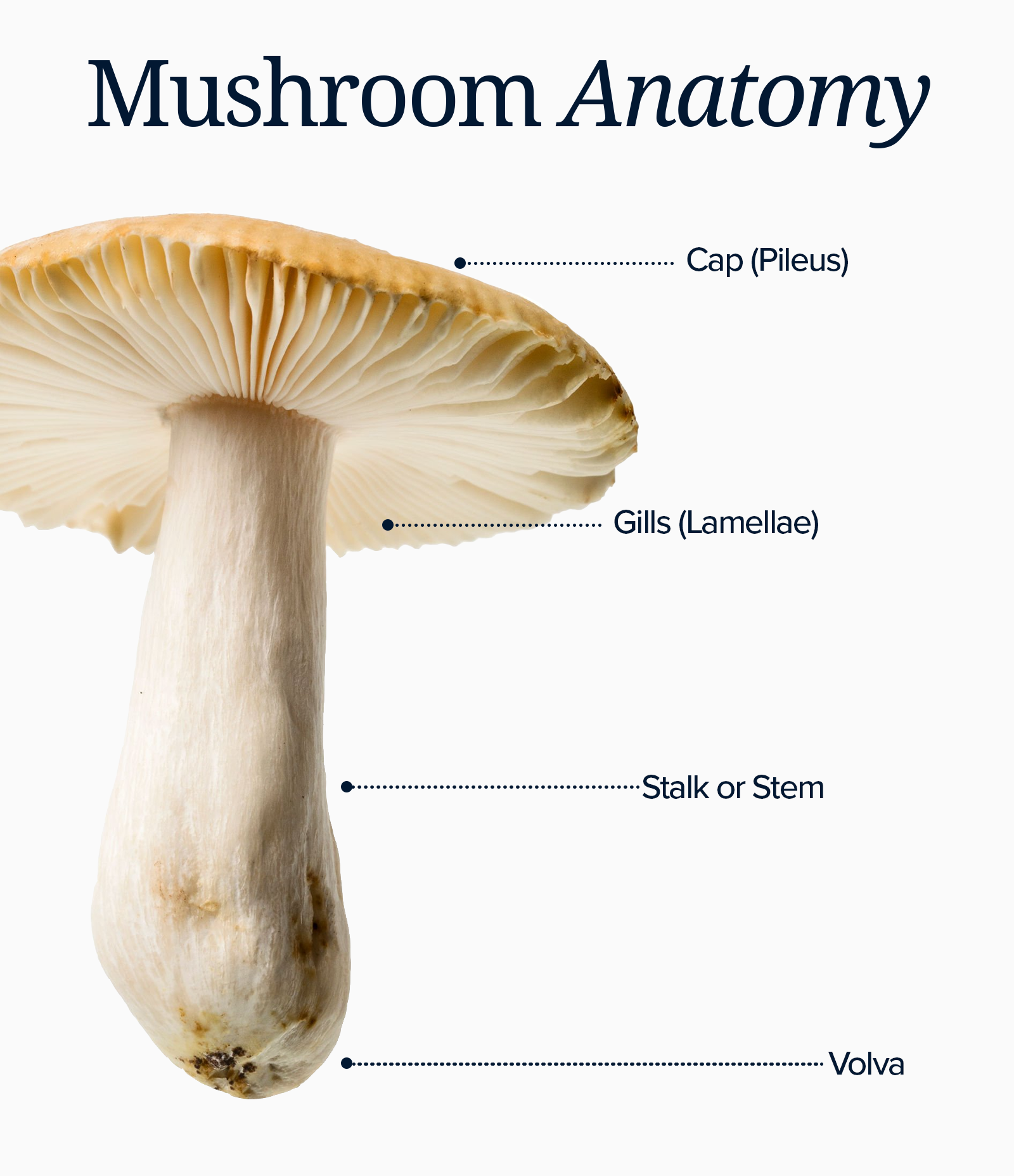
Importantly, ancient medicinal practitioners were not using mycelium. In fact, it was impossible to harvest mycelium until about 100 years ago when scientists began isolating and growing it in a lab setting.
The best comparison of fruiting body vs mycelium is if we were to consume the roots of a vegetable instead of the vegetable itself.
Health Benefits of Fruiting Body Mushrooms vs Mycelium
So what are the active compounds that make mushrooms so powerful? While there are literally thousands of compounds (and still more scientists are discovering every day), there are a few stand-outs that pack a big punch.
They are:
- Beta-Glucan: a polysaccharide (long chain carbohydrate) that acts as a soluble fiber and enriches the gut microbiome, regulates immune function, and prevents cancerous tumor growth [*,*,*].
- Terpenes and Terpenoids: a series of bioactive compounds shown to have antimicrobial, antiviral, antiparasitic, and antioxidant activity. Terpenes and terpenoids have also been studied as cancer-fighting agents and protect against neurodegenerative diseases [*].
- Ergosterol: The precursor to active Vitamin D3, ergosterol (provitamin D2) in mushrooms is one of the rare non-animal sources of vitamin D. It exists in the cell walls of all fungi [*].
Are Mycelium Good for You? What The Science Says
While the existing scientific literature on mushrooms is incredibly diverse, virtually all of the evidence supporting medicinal mushrooms comes from studies investigating the fruiting body, not the mycelium. For instance, there are currently only 405 documented studies investigating health benefits relating to mycelium, while there are over 19,000 studies pertaining to the fruiting body [*,*].
This 2022 study, specifically looking at the difference between the fruiting body and mycelia of the oyster mushroom, found that the fruiting body contained 3x the beta-glucan of the mycelia extract and had remarkably a higher antioxidant capacity (the antioxidants in the mycelia were virtually undetectable) [*].
And here’s a dirty secret the supplement industry doesn’t want you to know: There is a big difference between beta-glucan in fruiting bodies and the polysaccharides found in mycelium products.
Think of it like this: beta-glucan is a specific type of polysaccharide, but that doesn’t mean that all polysaccharides exert the same effects. Mushroom mycelium may be full of polysaccharides, but that doesn’t mean it will support your immune system or offer adaptogen-like properties like beta-glucan does specifically.
Ultimately there is a huge difference in potency between mushroom mycelia and fruiting bodies. In fact, most products that use mushroom mycelium as an ingredient are actually using mostly grain with a little bit of mycelium woven in.
Expert mycologist Jeff Chilton has extensively highlighted the disparity in nutritional value of the mycelium grown on grain compared to the fruiting body of the mushroom and has found that mushroom mycelium grown on grain shows virtually negligible beta-glucan content [*]
Is Mushroom Mycelium Mostly Grain?
Mushroom fungi grow on their “food.” In nature, they grow on rotting tree trunks; in manufacturing facilities, they grow on grain substrate – usually oats or rice.
Because it’s virtually impossible to separate the mycelia from the grain, most of the products using mushroom mycelia are actually supplementing with grain and a little bit of mycelium. Yet, they’re probably still charging a premium price and touting the benefits of a medicinal mushroom while failing to deliver.
When a brand claims to use “mushrooms” in their coffee replacement or chocolate bar and only uses mycelium? You can bet it’s mostly grain. Interestingly, grains are also high in polysaccharides, but NOT at the same potency as beta-glucans, and terpenes. This gives companies another loophole of being able to say that their “mushroom” products are high in polysaccharides, when they’re really just high in carbohydrates – not active, medicinal compounds.
The Problem with the Adaptogenic Mushroom Market
It would be great if, as a consumer, you knew that when you purchased and consumed a supplement or functional food product boasting the benefits of mushrooms, that’s what you were actually getting. Unfortunately, there is a complete lack of consistency or regulation around what parts of the mushroom are used.
It’s all too easy for brands and manufacturers in the United States to market a product as “adaptogenic” with a host of health claims relating to the research on adaptogenic mushrooms while actually incorporating only a fraction of an actual mushroom – or no fruiting body mushroom at all!
In fact, most products made in the United States use mushroom mycelia rather than fruiting bodies in their products because it is much easier to produce and is therefore a much cheaper ingredient.
Bottom Line: Prioritize Fruiting Body Mushrooms
If you’re looking for a high-quality adaptogenic mushroom supplement (and don’t want to waste your money), make sure the brands you trust are using fruiting bodies, not mycelia.
Fruiting bodies have been used for millennia, while it’s only been possible to harvest mycelium for the last 100 years or so.
The main reason manufacturers use mycelium instead of fruiting bodies in their products is because it’s cheaper and easier to use as an ingredient. Concentrating fruiting bodies into extracts is time-intensive, more expensive, and results in powders and concentrates that are slightly more bitter than mycelium.
Of course, the bitterness is the taste of all of the incredible, health-promoting active compounds!
Functional, adaptogenic mushrooms have the potential to mitigate physical and emotional stress, balance hormones, and support cognitive stress and immune function. It’s absolutely worth it to opt for the real deal.
Recommended Product:
Nandaka | Hormone Balancing Coffee Replacement
Essential and powerful phytonutrients are combined in a highly synergistic formula for an unparalleled coffee alternative. Expertly formulated to sustain energy, activate metabolism, enhance mood and support immunity – the whole is greater than the sum of its parts. Powered by cutting-edge Pique technology for enhanced absorption.
